Our time in the Dominican Republic was spent enjoying lovely beaches and learning about its history. Our trip began on the beach in popular Punta Cana. Then we traveled to Santo Domingo to learn about the country’s history. For the second half of our trip, we relaxed on the picturesque beaches of Las Terrenas. We visited the Dominican Republic in January of 2025. Any prices listed were the cost at that time.
Punta Cana
A Failed New Year’s Eve
We had planned on 3 nights and 2 full days in the Punta Cana area to start our trip. We were to arrive December 30th, giving us a day to figure out where we should celebrate New Year’s Eve the next evening. However, flight delays caused us to miss our connecting flight to the Dominican Republic. So instead, we got to spend a day in a boring hotel near the Minneapolis airport and arrived in Punta Cana 24 hours late. Therefore, we only had one full day to see why this place is so popular.
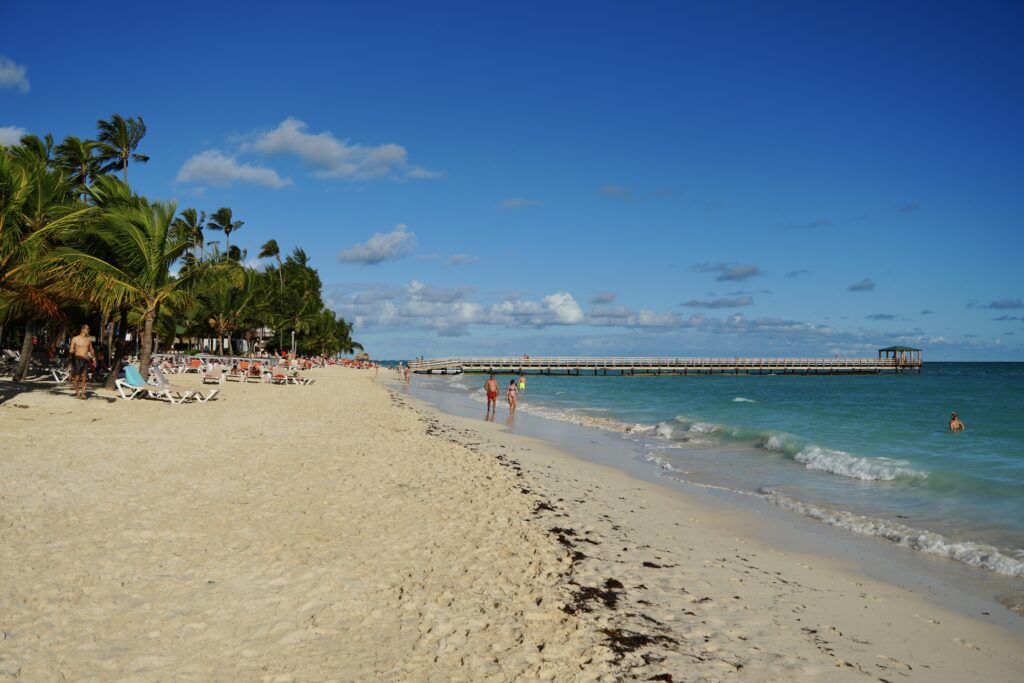
Arriving in the afternoon of New Year’s Eve, we tried to make a night of it. We had a nice dinner at a restaurant and then went in search for somewhere to bring in 2025. However, we couldn’t find any place to just hang out, grab a drink, and be around other people. We only found a couple sit down restaurants which would close before midnight, private resort celebrations that didn’t allow outsiders in, and one $90 USD dinner/bar (but we had already eaten). So sadly, we finally gave up and fell asleep 45 minutes before midnight. I was briefly awoken by thunderous fireworks… so I guess we could have enjoyed those had we still been awake and outside.
Beach in Puna Cana
The gorgeous turquoise water and light sand beach in Punta Cana are incredible, but everyone seems to know it and you will need to share it with many other people. The beach was very crowded for at least a mile each way from its closest point to our Airbnb. If you are a morning person, the beach will be the most relaxed and beautiful in the early morning before everyone else is up. Even though the beach is busy, there is still plenty of room in the ocean water. Floating in the refreshing water under the Caribbean sun is delightful.

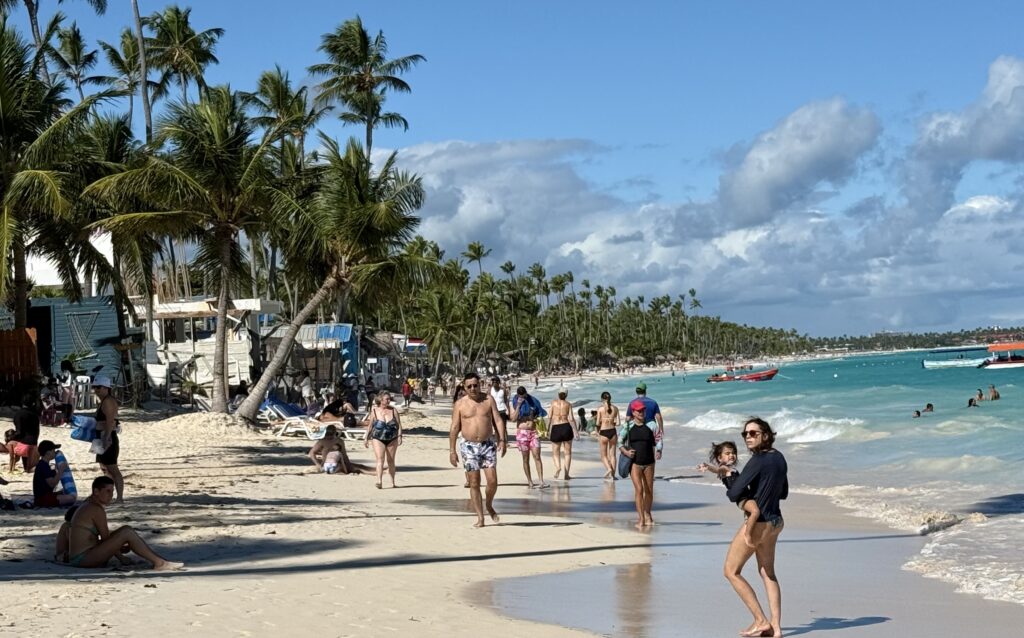
We stayed at an Airbnb in Bavaro, near Playa Bavaro (Bavaro Beach). There were a few good restaurants within short walking distance from us. Unfortunately, we didn’t find any restaurants or bars along the beach with a nice view that seemed to be open to the public. It seemed like oceanfront venues were just for residents of those resorts. However, we were only in this area for 2 nights and did not have enough time to get to know the area and policies well.
Santo Domingo
Bus from Punta Cana to Santo Domingo
We took the bus from Bavaro, Punta Cana to the capital city of Santo Domingo. The journey takes about 3 to 3 1/2 hours. You can get a taxi, Uber, or a tuk-tuk to the Bavaro Express Station or take a local bus which we were told come by every 20 minutes or so. Our Airbnb host offered us a ride, so we took him up on the offer. It is recommended to be at the bus station an hour before your departure to buy your ticket. We paid by credit card at the station and were given assigned seats. The cost was 400 pesos per person (about $6.50 USD). There was storage under the bus for larger bags/suitcases and we were given a ticket for our tagged bag, so it was well organized and secure. The bus left exactly on time to the minute.
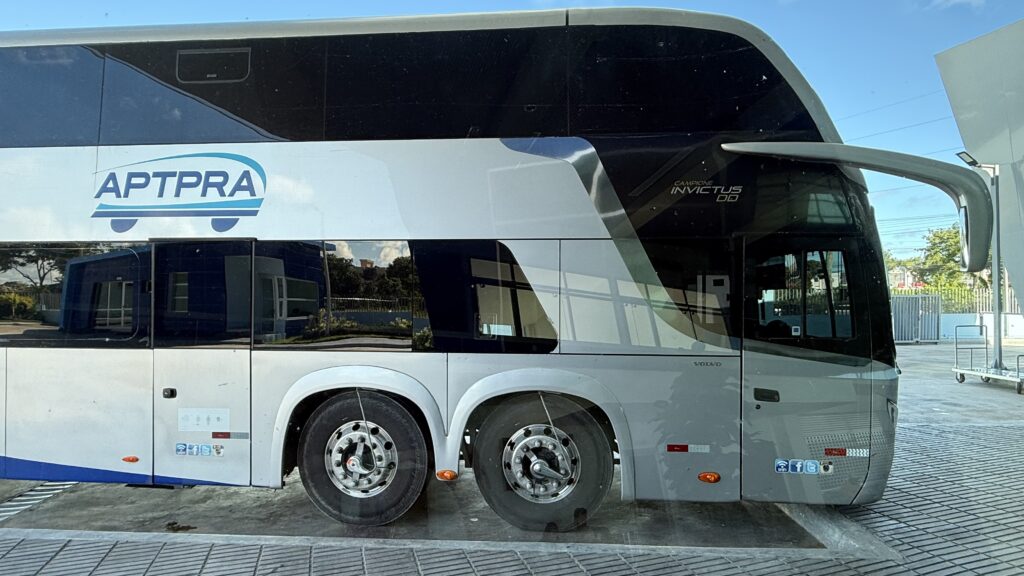
The double-decker bus had comfortable seats, good air-conditioning, and even a bathroom on board. The WiFi on board worked for part of the trip. The bus has multiple stops in eastern Santo Domingo before crossing the river to the west side where most tourists plan to stay. There are two stops in western Santo Domingo. The first of these stops is closer to the colonial district and you can easily get an Uber or taxi from this or the final stop.
The city
Santo Domingo is the capital city of the Dominican Republic. It’s also the largest city with over a million residents and 3.7 million in the metropolitan area (as of 2022). Santo Domingo is the oldest continuously inhabited European settlement in the Americas. It was founded in 1496 as the first Spanish colony in the new world.
Santo Domingo is noisy but felt pretty safe. Vehicles frequently honk as they rumble by and the small corner shops are often playing music. The shop across from our Airbnb was especially loud. It blasted very loud music from late afternoon into the night each day we were there. Despite the noise, I still enjoyed the city. It felt welcoming because many locals smile and offer a greeting as you pass. Also, a nice walking path called the “Malecón” follows the water-front for miles. I loved starting my mornings with a run on this uninterrupted and scenic path.
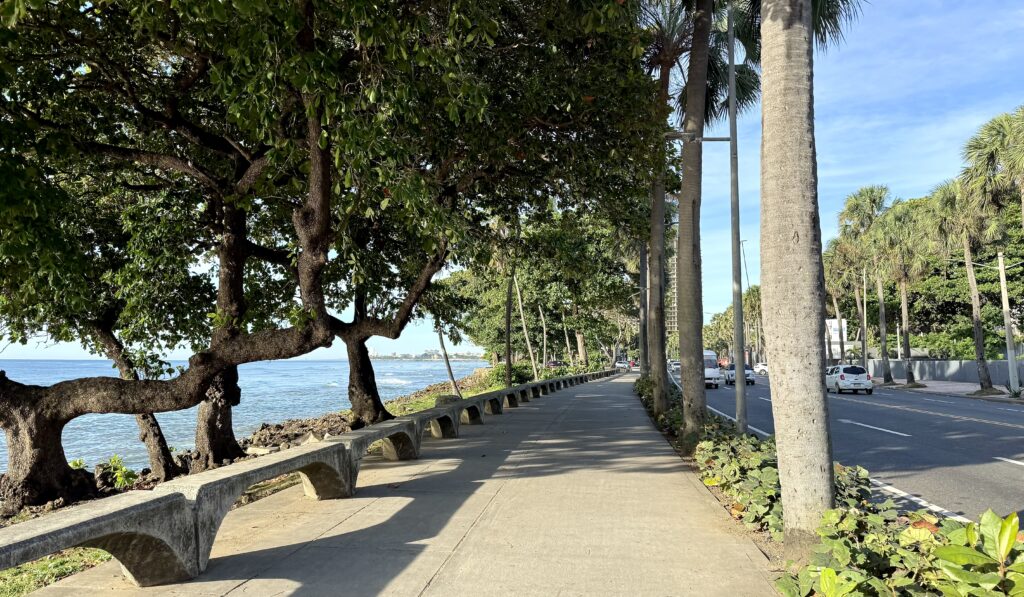
Colonial Zone of Santo Domingo
Our top reason to visit Santo Domingo was to check out the history of the colonial zone (Zona Colonial). This is the oldest part of the city and where the oldest remaining structures can be visited. There are paid tours and free walking tours (for a tip) that you can do in the Zona Colonial which would probably provide great ways to learn about the area. We chose to walk the area on our own to take our time. We used the app “smart guide” and followed its free walking tour of the area and read the information it provided for each stop.
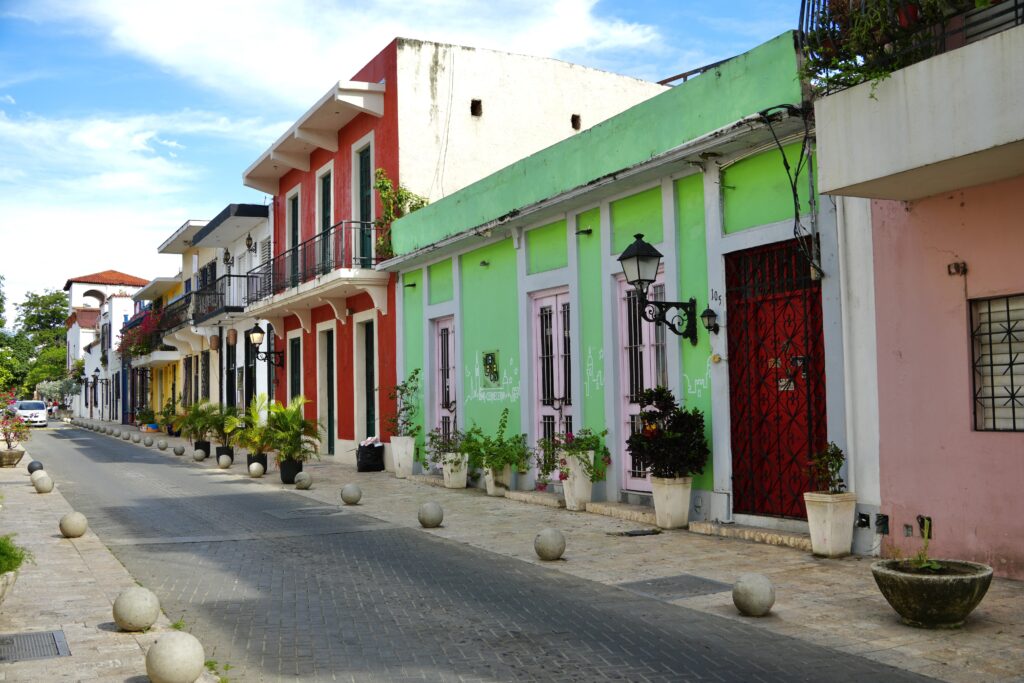
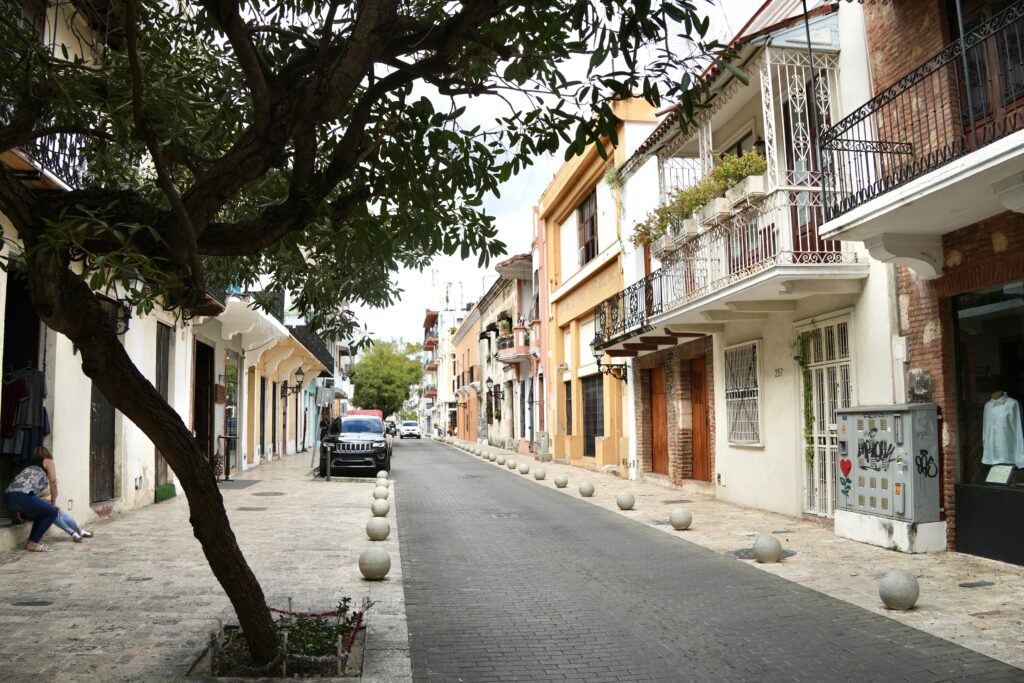
Independence Park is the site where Juan Pablo Duarte proclaimed independence for the Dominican Republic in 1844. The Gate of the Count is the old stone wall that you can enter and exit Independence Park through. Construction began on this wall in 1543 and it was once the entrance into the fortified city of Santo Domingo. A white marble mausoleum at the other end of the park holds the remains of the Dominican Republic’s founding fathers. Inside you will find statues of these honored men: Juan Pablo Duarte, Francisco del Rosario Sánchez, and Ramón Matías Mella.
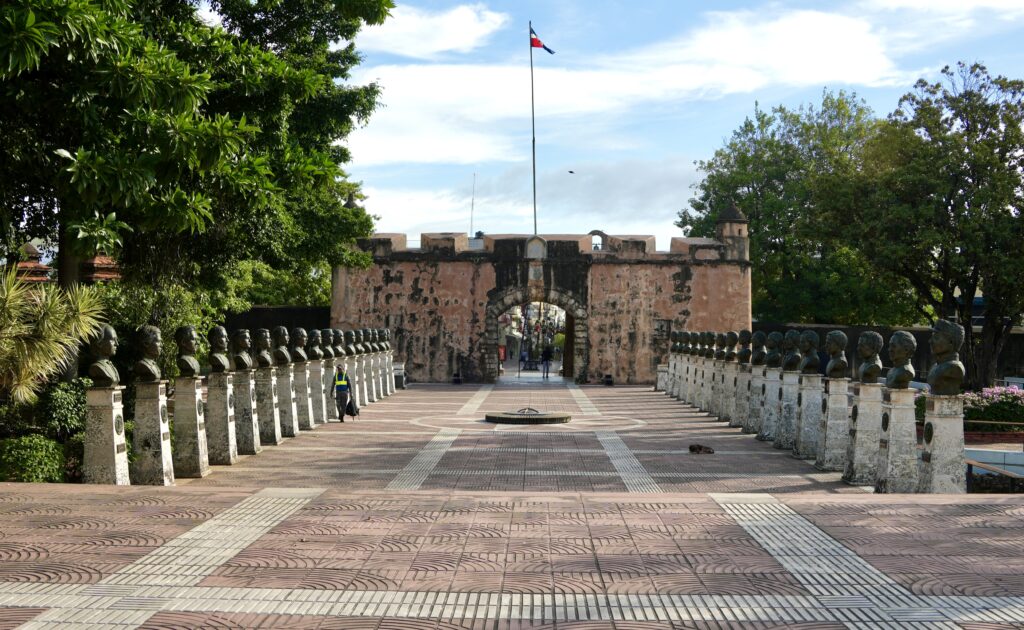
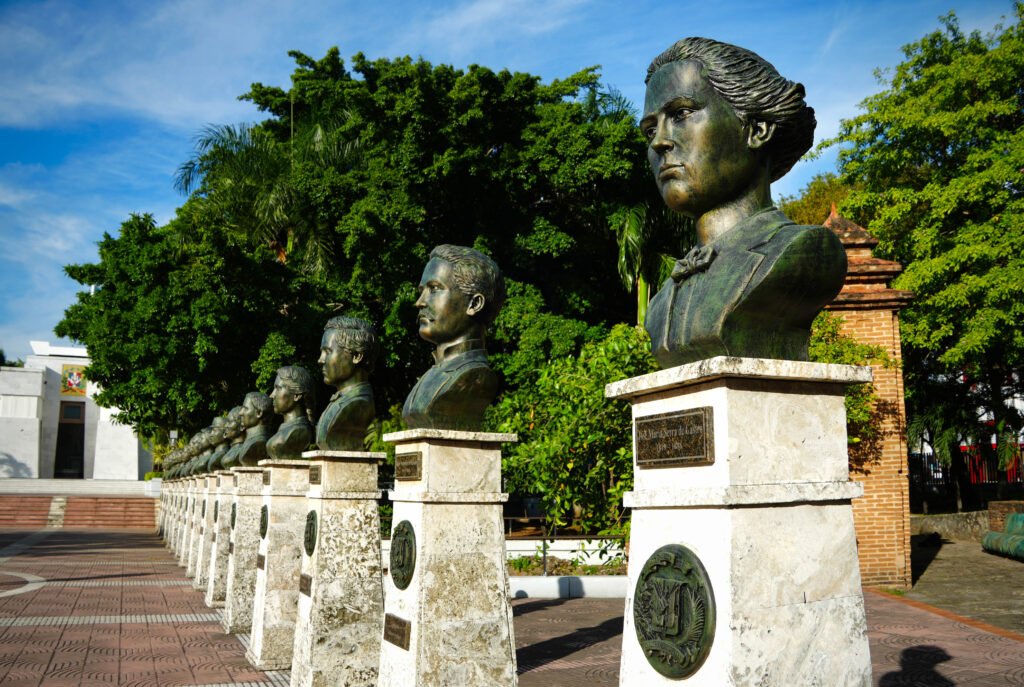
The Catedral Primada de América (The First Cathedral of America) is the oldest existing cathedral in the Americas. It was built between 1510 and 1540. Its official name is Santa Iglesia Catedral Basilica Nuestra Seňora de la Encarnación. This exquisite cathedral is of Gothic design with vaulted ceilings and 12 side chapels.
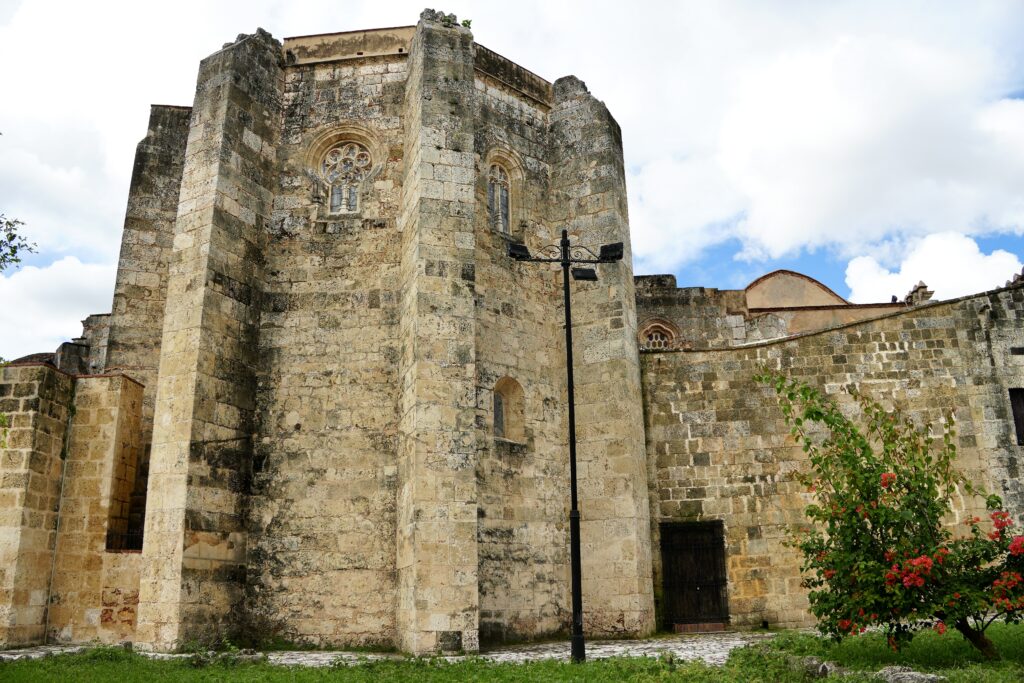
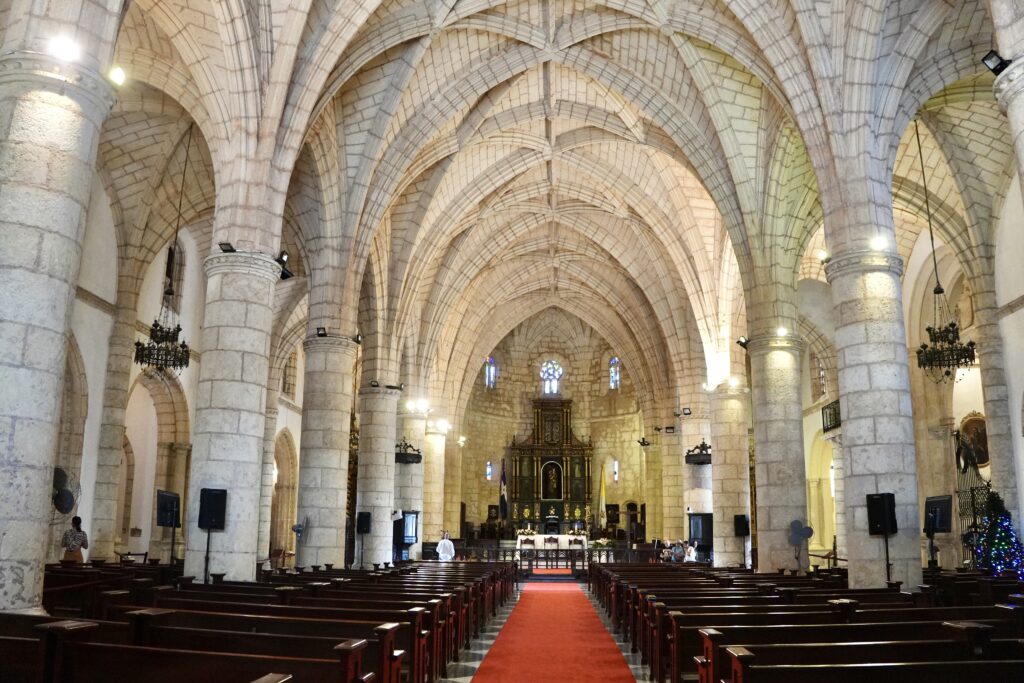
Facing the oldest cathedral is Columbus Park. In the middle of the park is the statue of Christopher Columbus with a native Taino named Anacaona looking up at him. The park has nice trees offering plenty of shade. A row of cafes opposite the cathedral invite you to sit, take in the view, and enjoy a coffee.
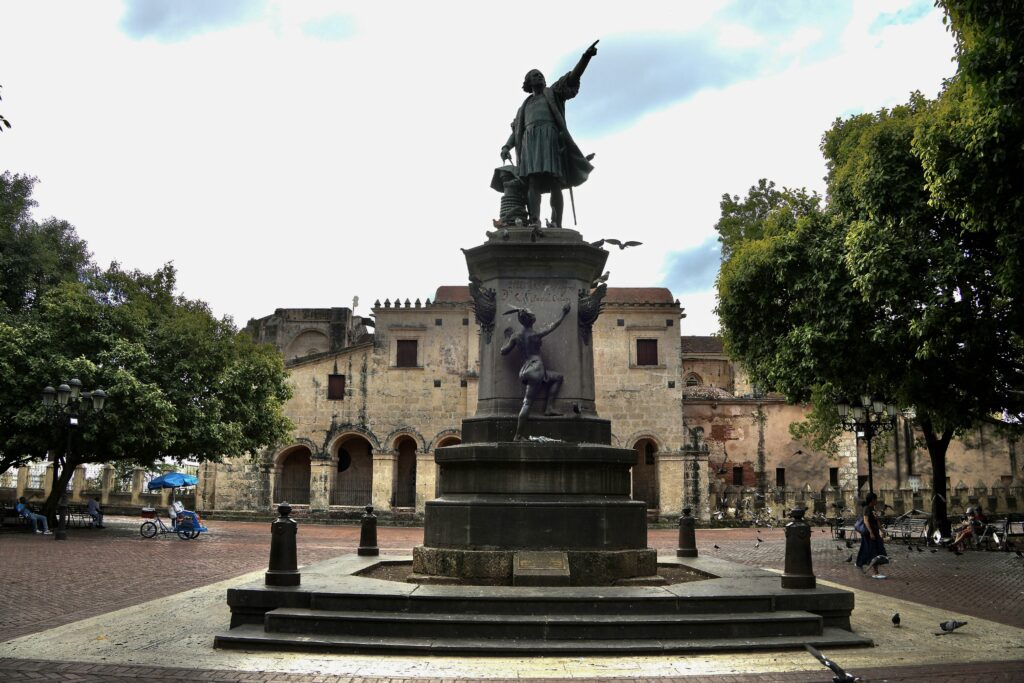
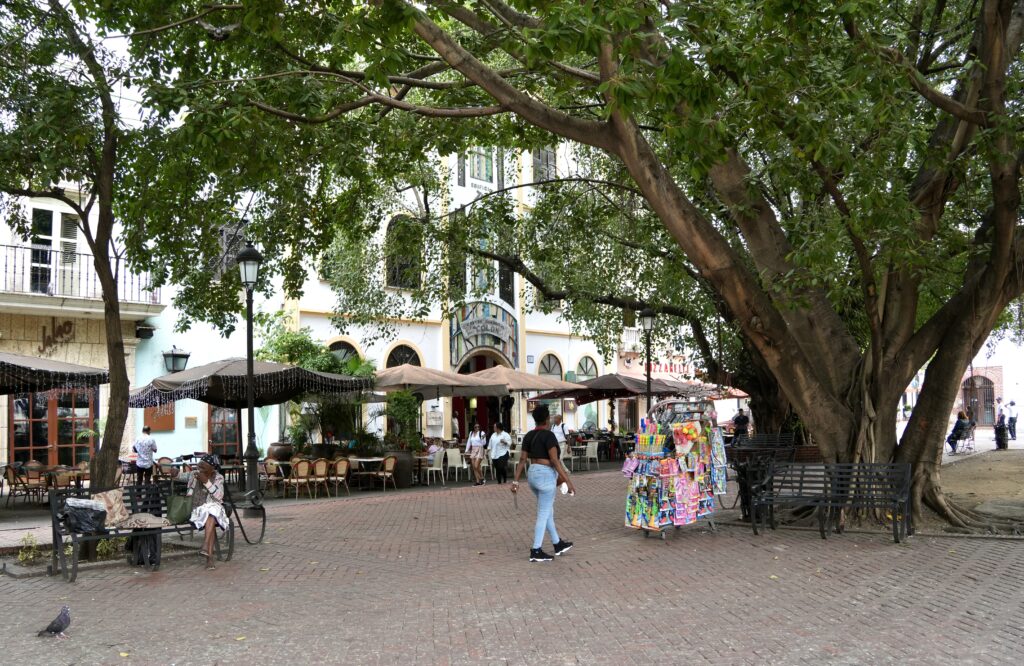
The Convent of the Dominicans is a 16th Century church. Fifteen friars from Spain lived here in 1517 including Fray Antón de Montesinos. He was the first human rights defender in the Americas and spoke out against the abuses of the native Taino people.
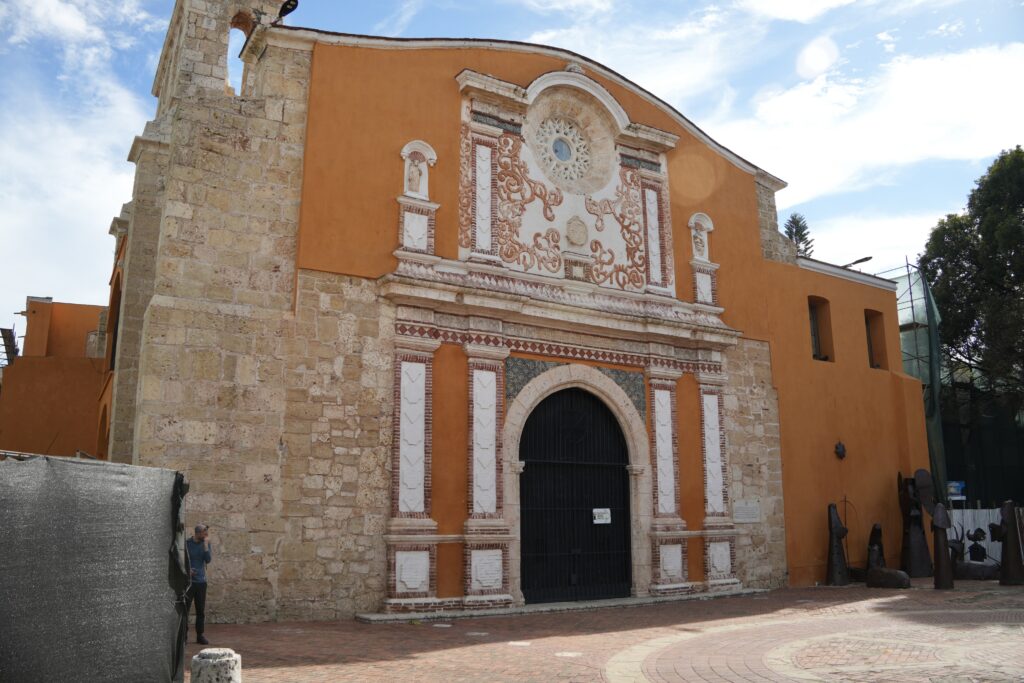
The Church of Our Lady of Mercy was built in the 1530’s by the Spanish to help establish Catholicism in this part of the world. The church was once plundered by the infamous Sir Frances Drake from England.
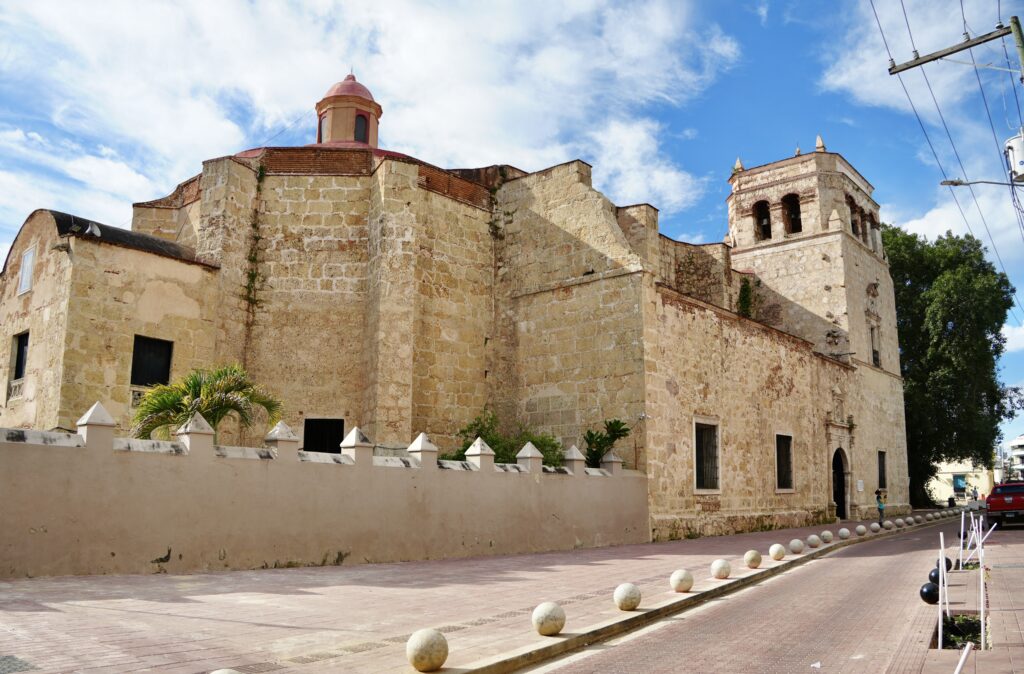
The Church and Convent of Regina Angelorum was the second convent in the Americas and was built in the 16th century. Inside this old gothic church is a silver altar from 1668. When the French invaded in 1810, the building was used as barracks for their troops. Over the years it has been used for various functions, but was returned to a church and convent again in the early 1900s.
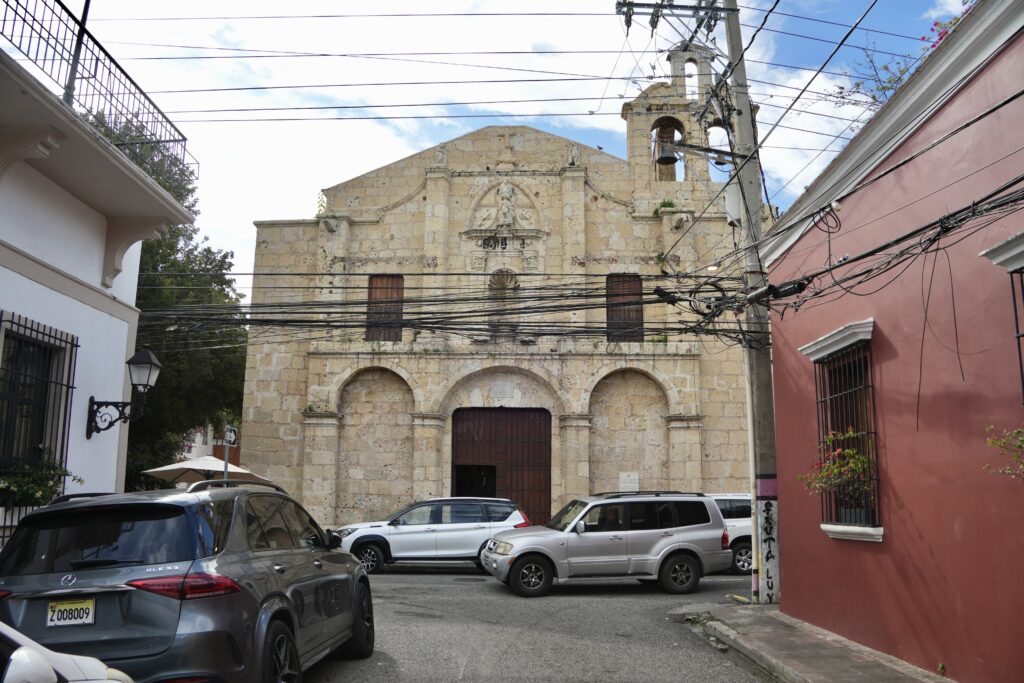
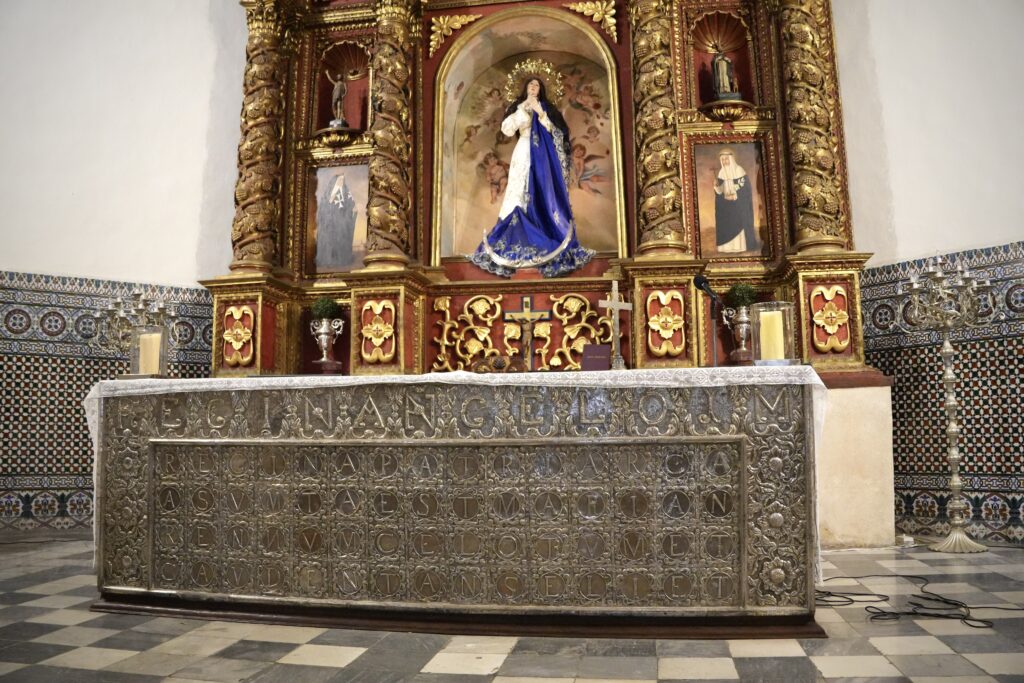
The Ozama Fort is the first permanent European military structure in the Americas. It was constructed between 1502 and 1508 by the Spanish. The walled grounds contain a 69 foot tall tower near the center that resembles a medieval castle. Original cannons still face the river where they once defended the fort from pirates and other dangers.
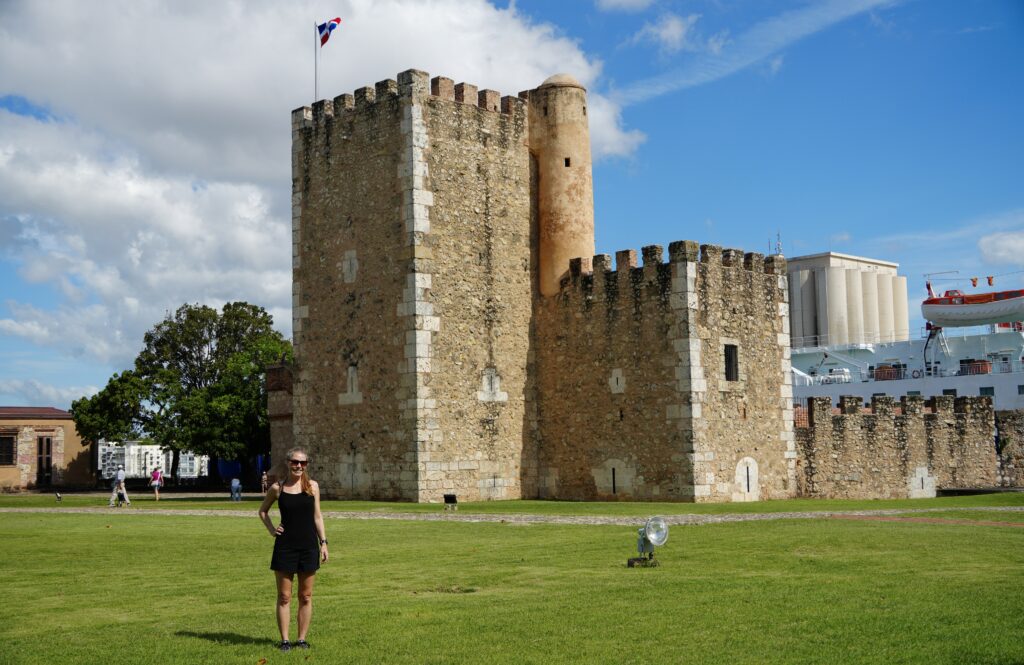
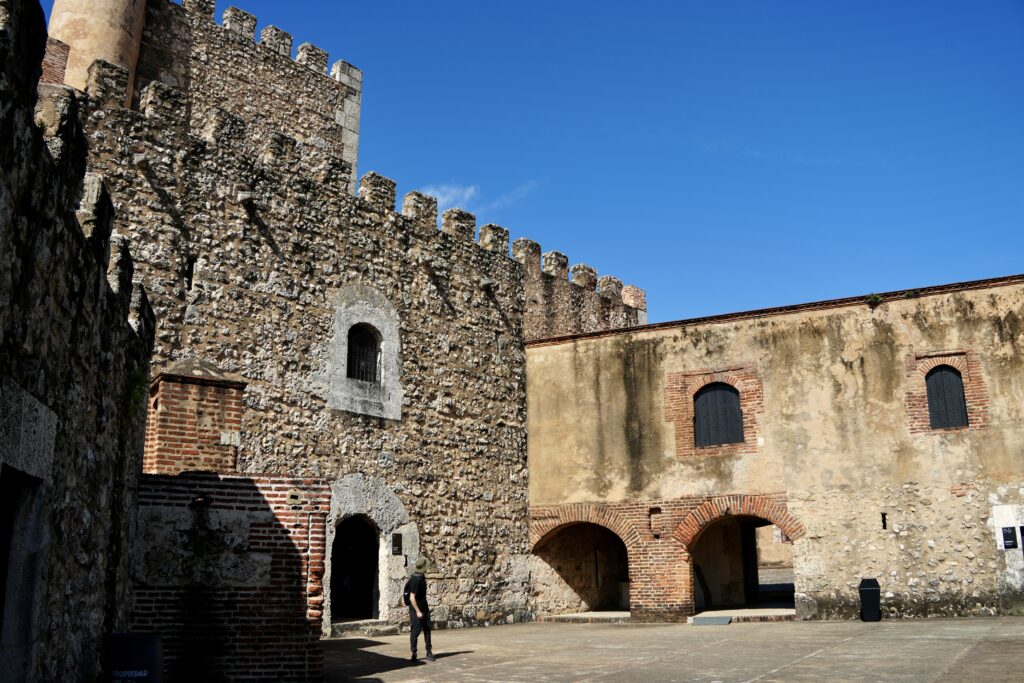
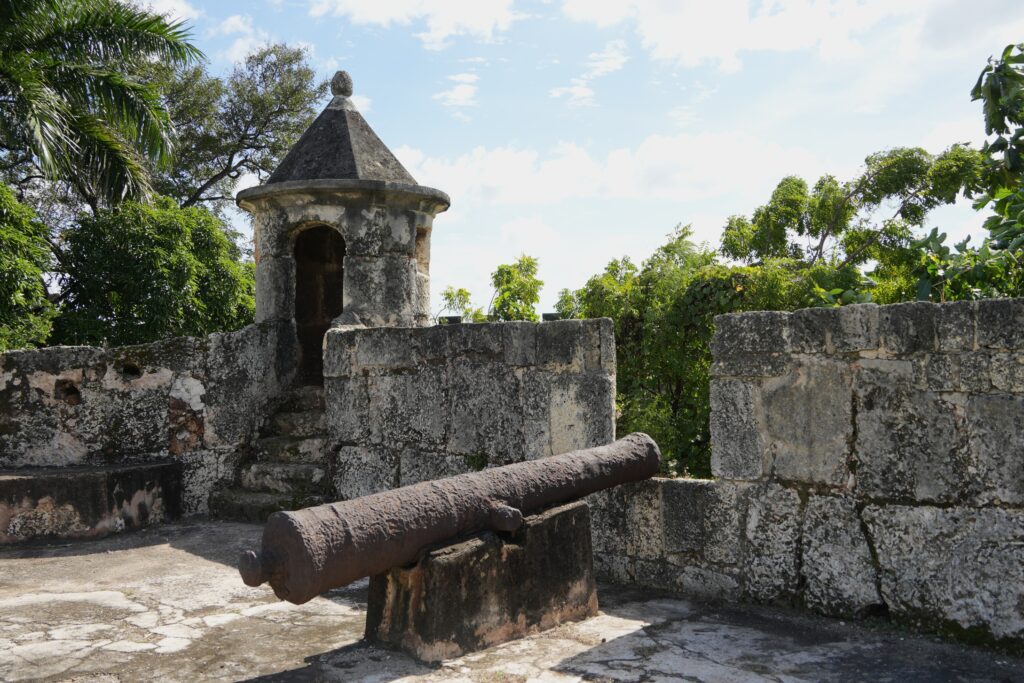
The Hospital San Nicolás de Bari is now just a ruin, but a beautiful one in my opinion. UNESCO has recognized it as the oldest hospital built in the Americas. Its construction began in 1503 and its wards were able to take care of 70 patients when it opened in 1522. The hospital was in operation until the mid-18th century.
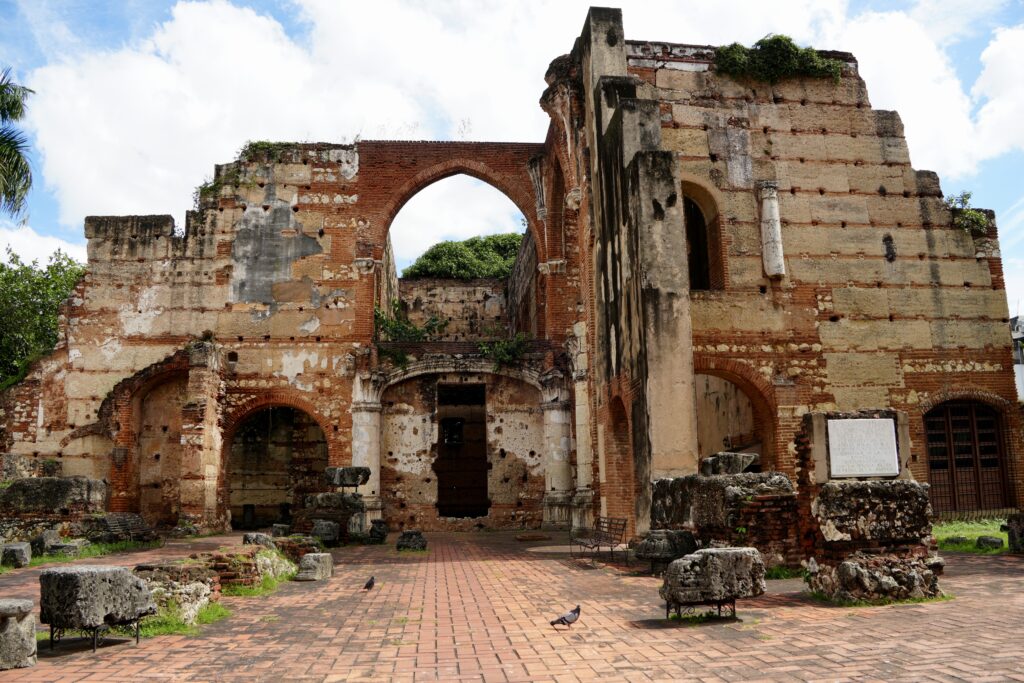
The National Pantheon became the nation’s national mausoleum in 1956. The building was originally a Jesuit church, but it now holds the remains of many Dominican heroes. The Dominican national shield is engraved on the front of this gorgeous old limestone building. Inside you will find an eternal flame burning in honor of the nation’s heroes. There is also a beautiful mural on the ceiling depicting the ascension to heaven.
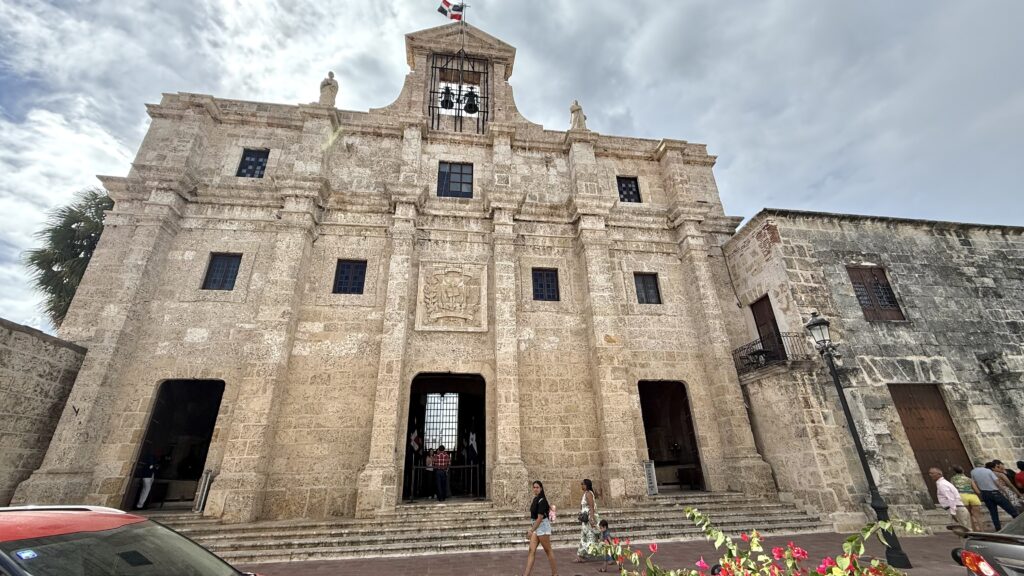
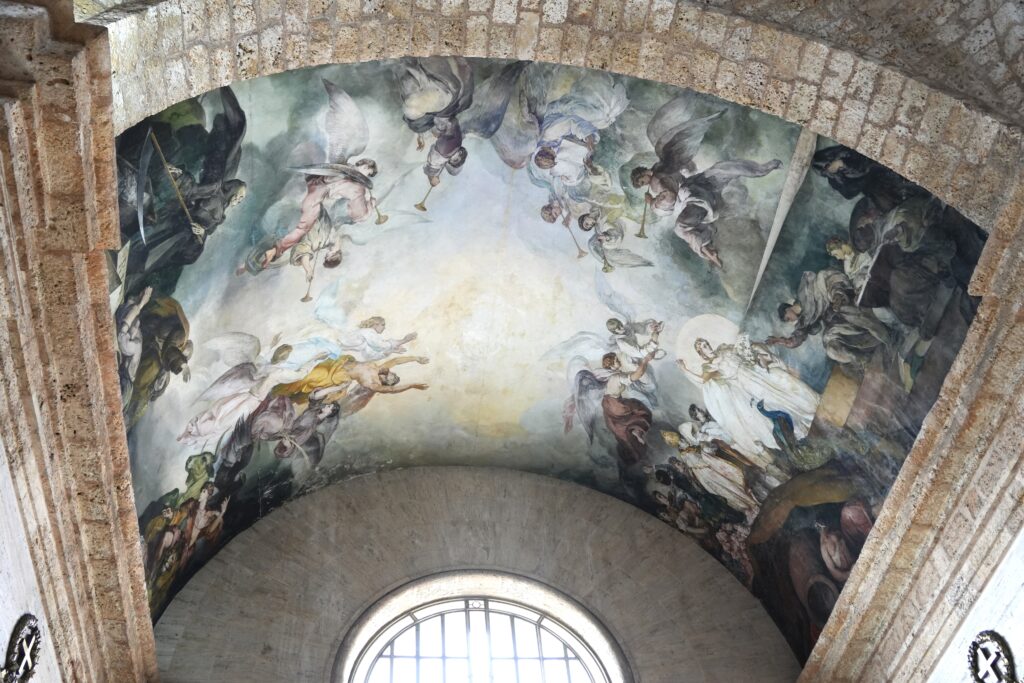
Los Tres Ojos National Park in Santo Domingo
I also recommend visiting Los Tres Ojos National Park in eastern Santo Domingo. Los Tres Ojos is a series of caves hiding bright blue lagoons within them. These sinkholes were created about 10,000 years ago. The name Ojos (Spanish for eyes) comes from their oval shapes. The native Taino people used these sites for religious rituals.
You can easily visit Los Tres Ojos National Park independently instead of paying for a tour. We took a cheap 200 pesos ($3.27 USD) Uber from our hotel west of the colonial zone to the entrance of the park. Entrance was only 200 pesos and you have the option of paying an additional 50 pesos in cash to the people pulling a boat across the third lagoon to reach the fourth lagoon. No guide is needed inside the park.
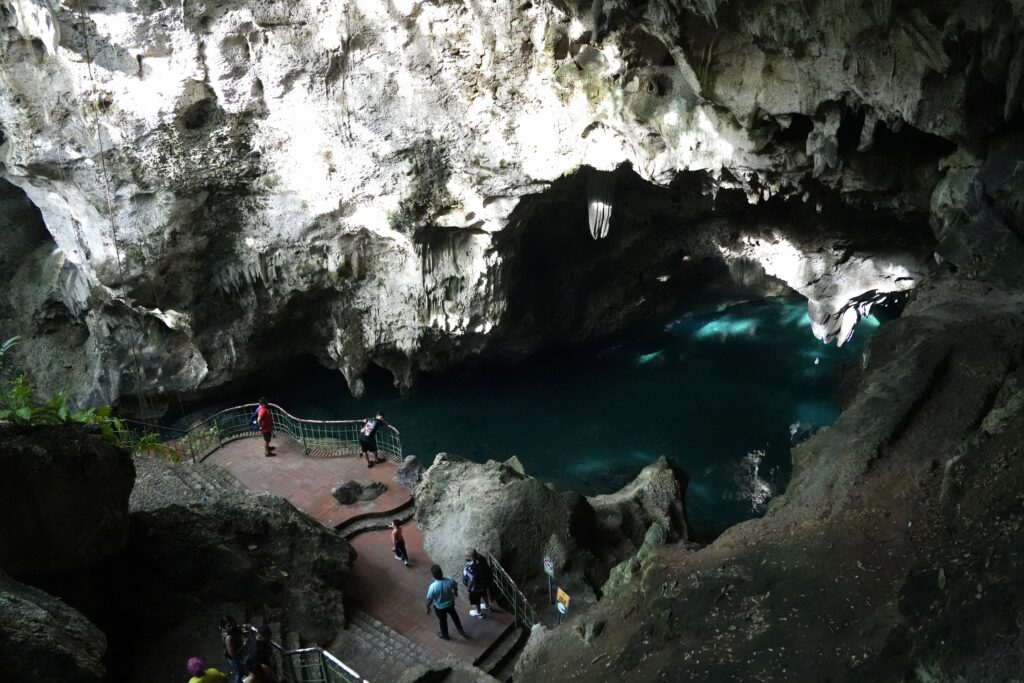
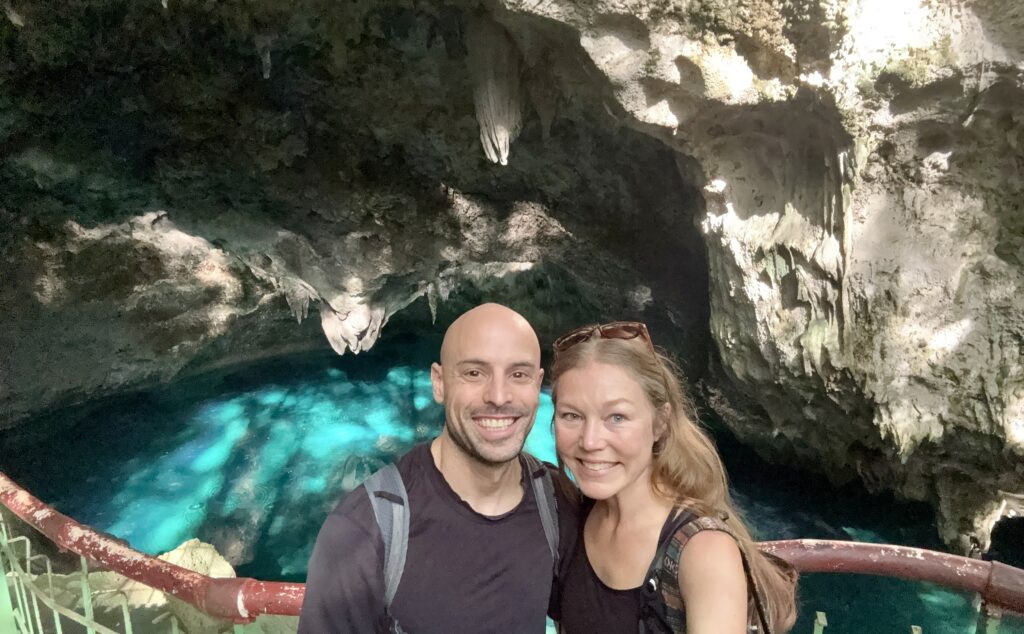
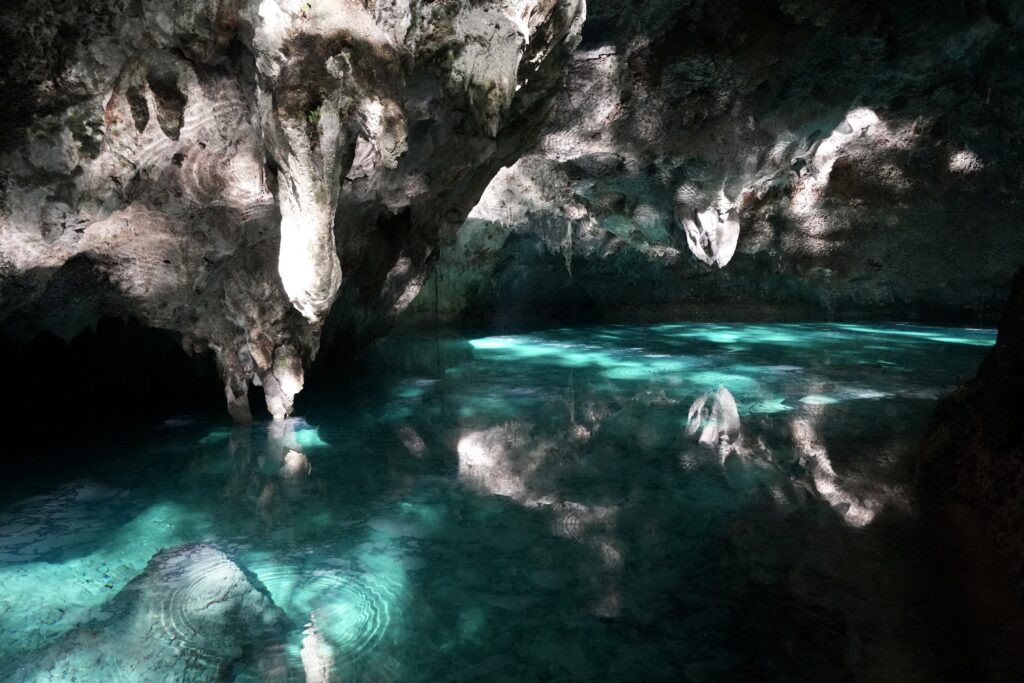
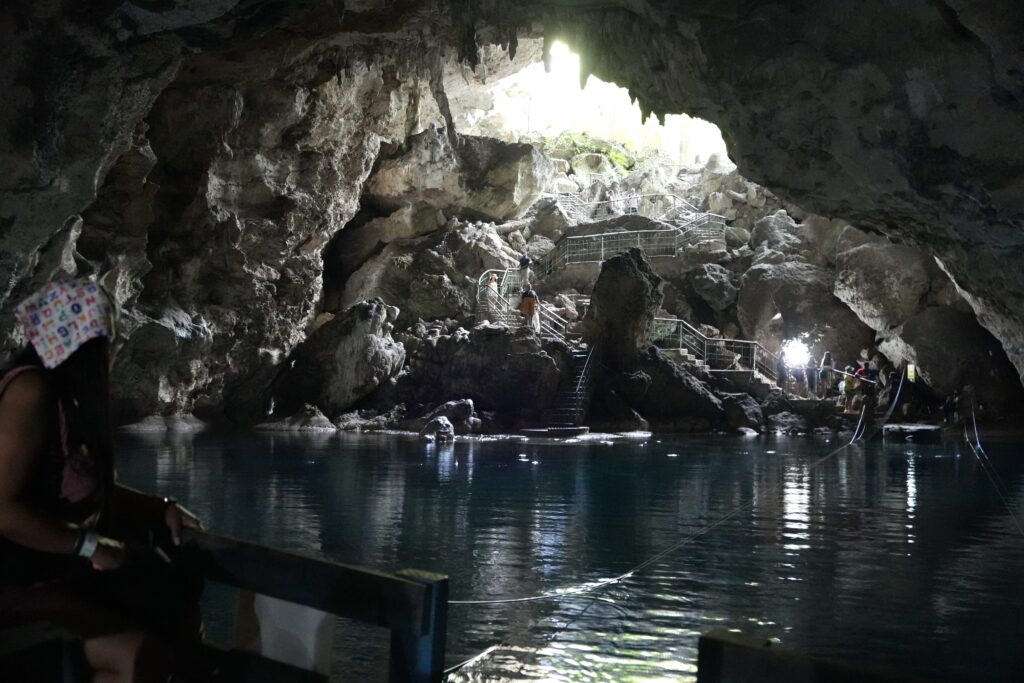
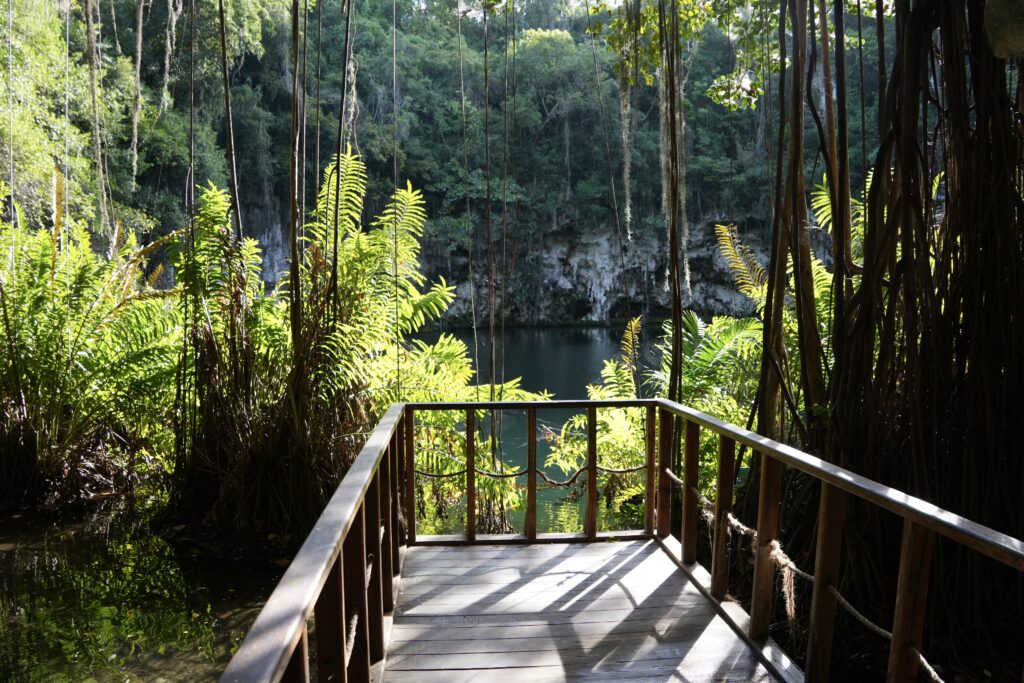
Las Terrenas
Bus between Santo Domingo and Las Terrenas
We took the bus from Santo Domingo to Las Terrenas which took about 2 hours and 45 minutes. While this bus wasn’t as nice as the one we took from Punta Cana to Santo Domingo, it still had air conditioning. It also had a storage area under the bus for your larger bags, but they were not tagged. It was recommended to get to the station 30 minutes before departure to ensure you get a seat. It is possible to board the bus at two stations in western Santo Domingo. The seats did not fill up at the first departure location but some people had to stand after the second departure location. We paid 500 pesos per person in cash on the bus and it was collected after we were already on the road. Paying with cash was the only option.
We took this same bus back to Santo Domingo at the end of our time in Las Terrenas. It arrived at the station 30 minutes before departure and did fill up by the time we left. Unless you are up for a long walk with your luggage, you will want to take a taxi or motorcycle taxi to and from the bus station in Las Terrenas. It was about 3 kilometers between the bus station and our Airbnb location on the beach.
Around Las Terrenas
There is a main road that leads from the highway through town, down to the beach. Loud trucks, motorcycles, and cars are crowding this street and often honking. Unfortunately the noise creates some stress while walking through town. Once you reach the road that runs along the ocean, there is less noise, with a bit less traffic on this beach road. It’s nicest in the early morning when most vehicles are not yet out. Walking on the sand next to the water is the most relaxing.
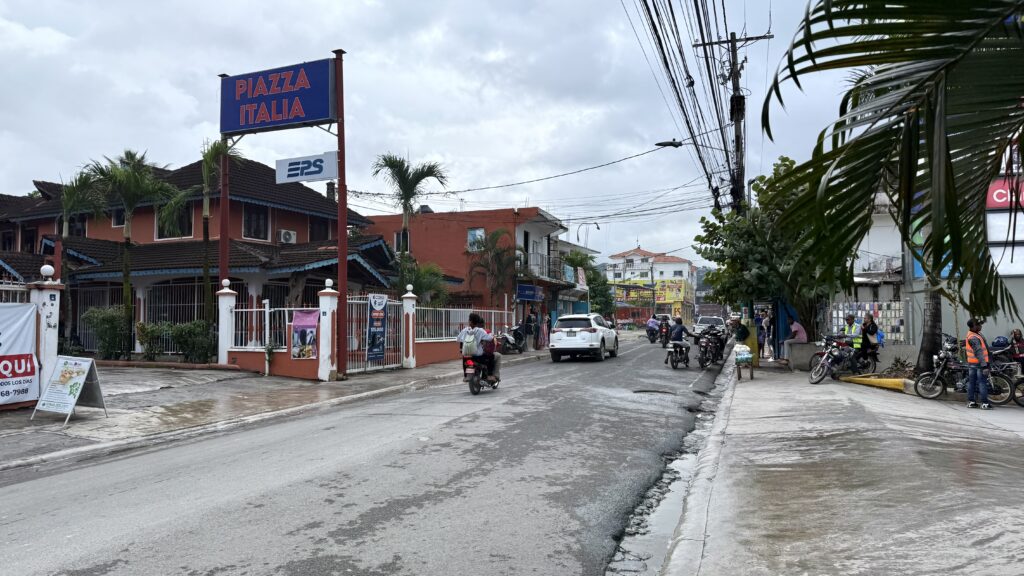
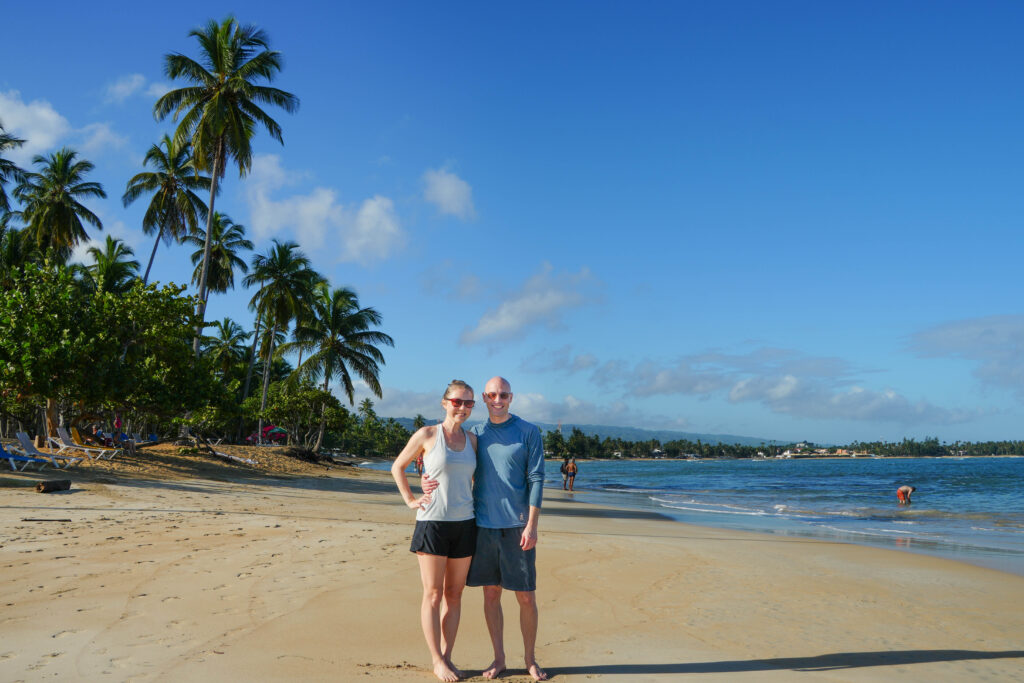
Las Terrenas is an easy town to visit as a tourist. It’s easy to find people that speak English or French as well as Spanish. Like the other areas we visited, it felt very safe and welcoming. While we were here, construction was in process on the buildings and road at the junction where the main road into town meets the ocean road. The beach around this area is not very nice, though this may be due to the current construction. There is garbage washed up on shore in this area. Once you walk a little ways in either direction the beaches are much cleaner and nicer. Each morning, locals are out cleaning up the beach around their restaurants and/or hotels.
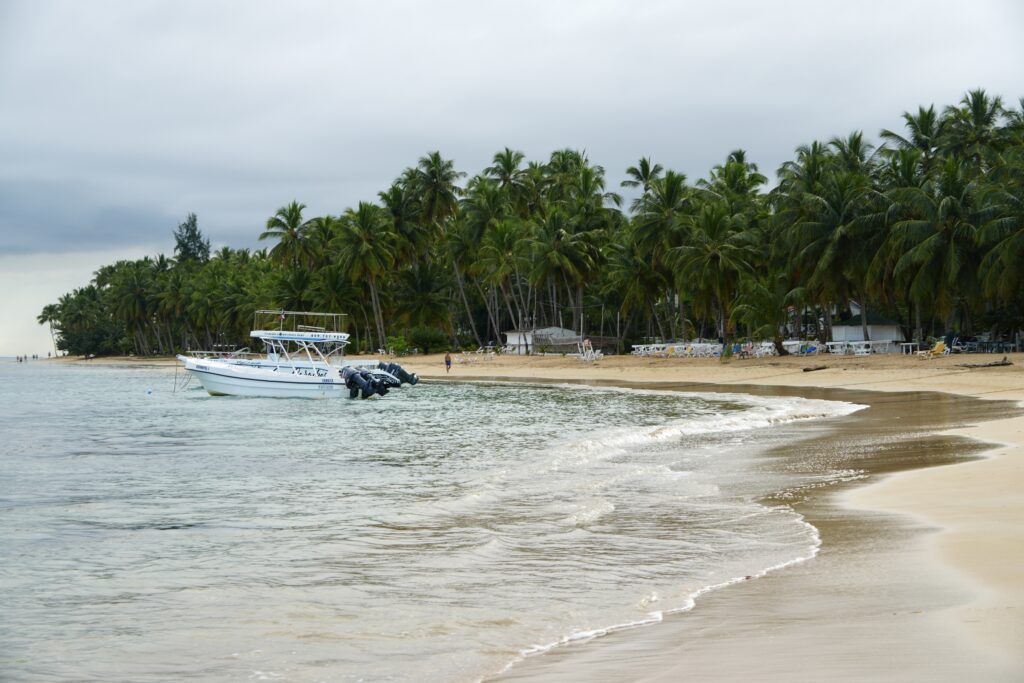
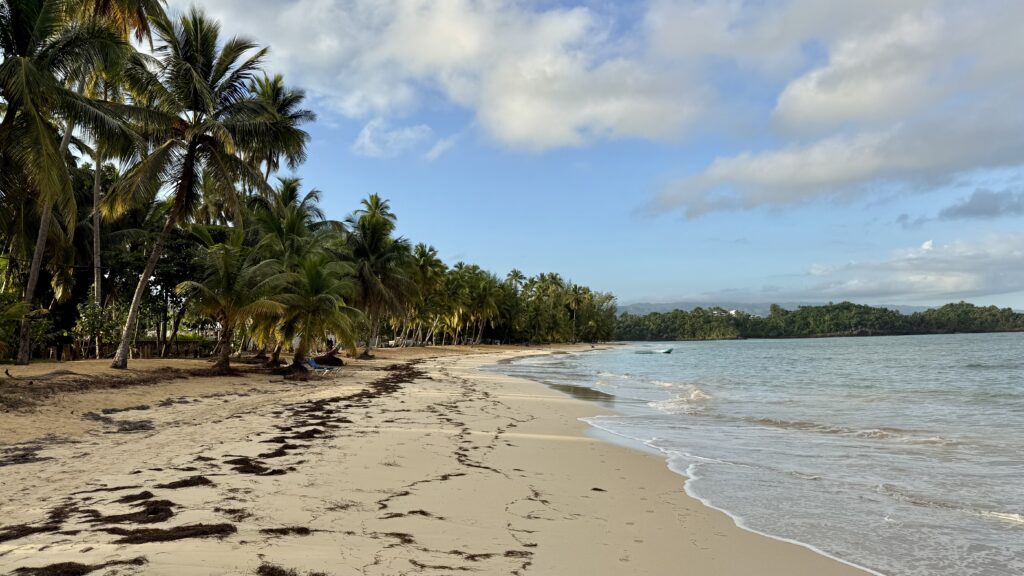
We didn’t do much while in Las Terrenas. It was our relax and take it easy location and we decided to stay for a full week. We mostly just swam in the ocean each day, took walks on the beach, read on the beach, and did daily workouts. There are a few beach bars with seating on the sand scattered along the coast. Sipping a cold and fruity cocktail while sitting in the shade and taking in the beautiful view was pure bliss.
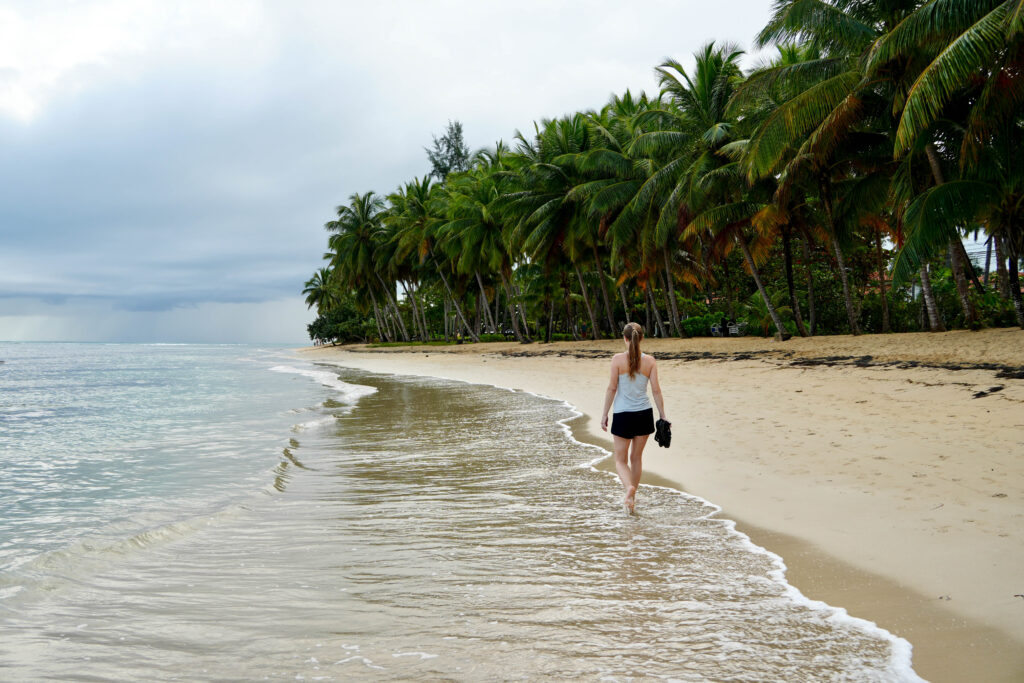
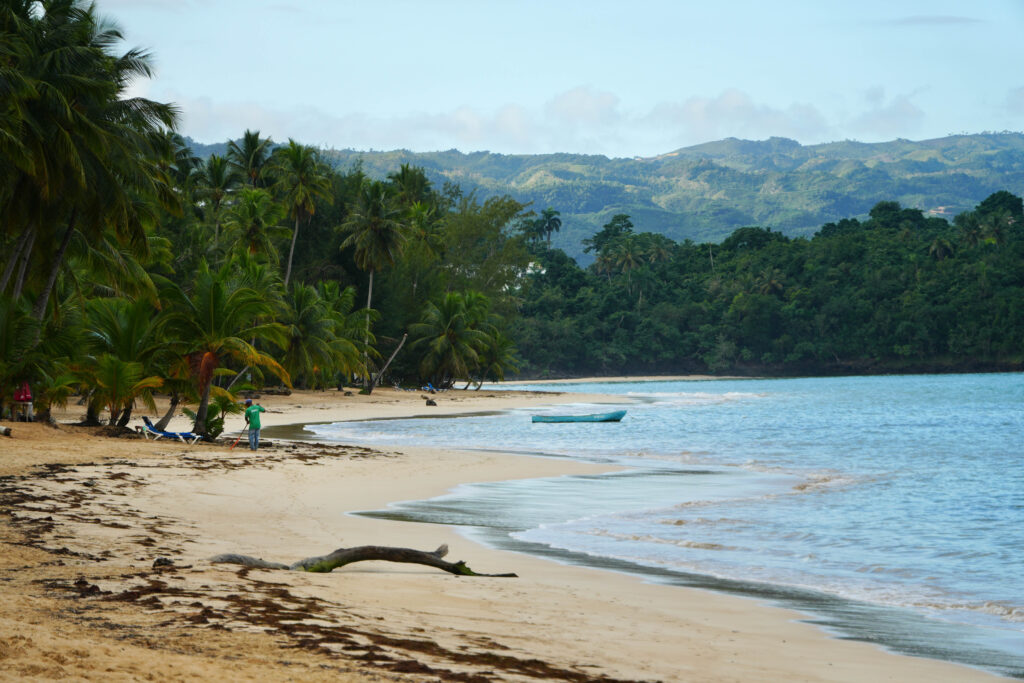
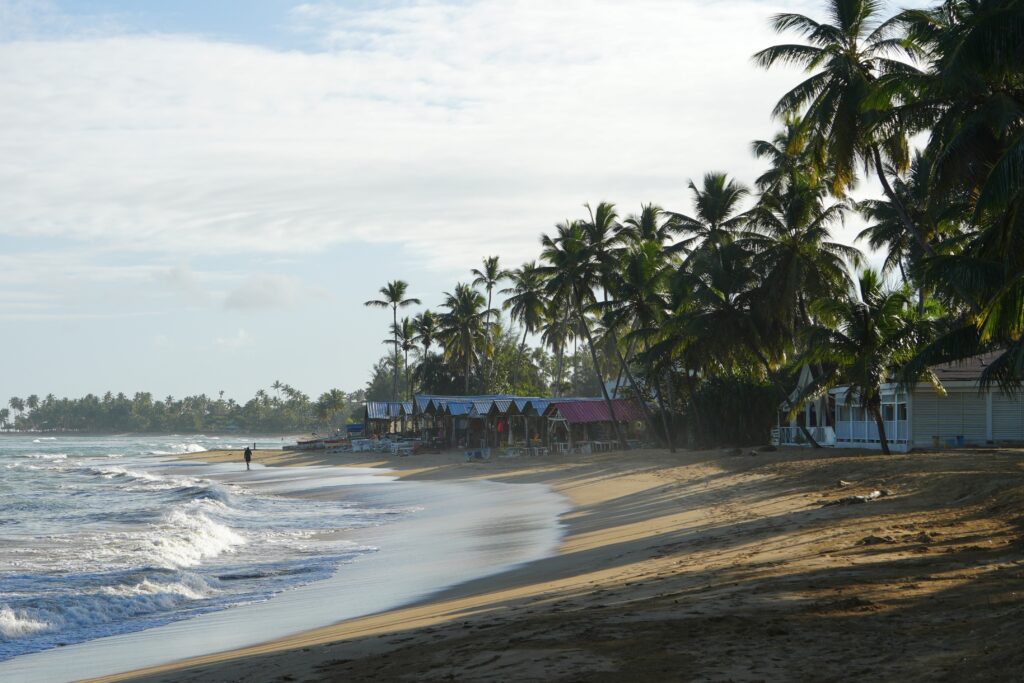
Restaurants in Las Terrenas
The beach bars/restaurants offer great atmosphere for dinners. Seafood is offered at the majority of these places. There are many options on the menu, however they are very limited for vegetarian cuisine. Since I do not eat meat, I cannot comment on most of the food here. However, there are a few places in town I can recommend. The pizza place on the beach called “Casa Azul Pizzeria” was quite good and the location is lovely. We also enjoyed the empanadas at “Empanadas y Mas” which is located about a block from the beach. It is ran by a nice family and this cute little restaurant has a couple of friendly cats that hang around. There was another pizza place a couple blocks further along this same road that was a bit fancier called “Pulcinella il Gusto di Napoli”. A great place we visited for breakfast a few times is called “The Juice Box”. This little place had good food and great prices. They also had protein shakes and pressed juices on their menu.
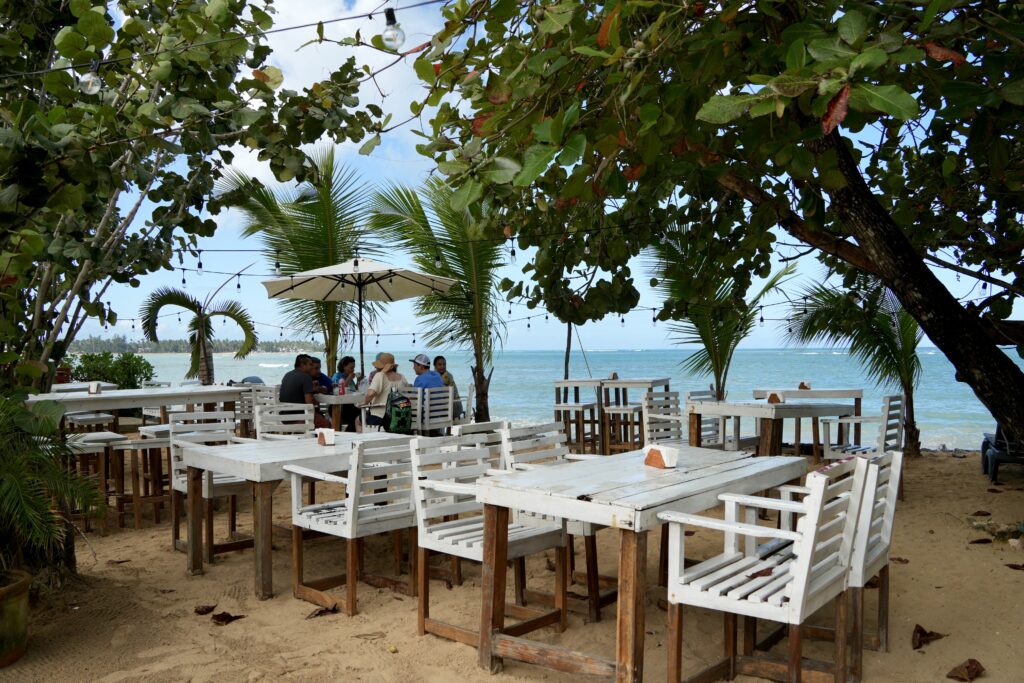
End of our time in the Dominican Republic
That wraps up our 2 weeks in the Dominican Republic! We took the bus back to Santo Domingo and spent one night in the colonial district. Our room here was much quieter than our previous stay outside of the Colonial Zone. We then took the bus from Santo Domingo back to Punta Cana and spent a night near the airport before flying out.
There are 2 terminals at the Punta Cana Airport. I flew out of terminal B and Dave flew out of terminal A. He got through security in less than 20 minutes. I however spent 1 hour and 15 minutes getting through the security line. Not sure if it was just a bad day, but I recommend giving yourself extra time before your flight to be safe.
Thanks for following along on our journey!
Leave a Reply